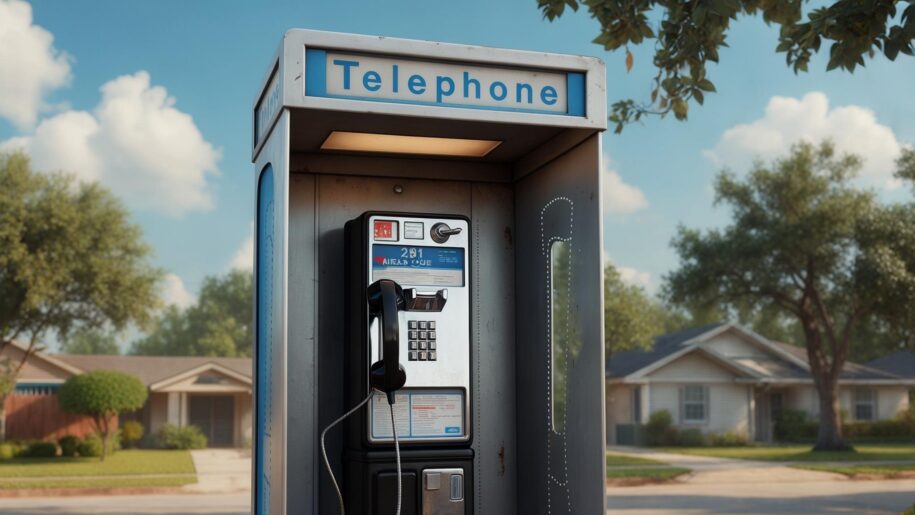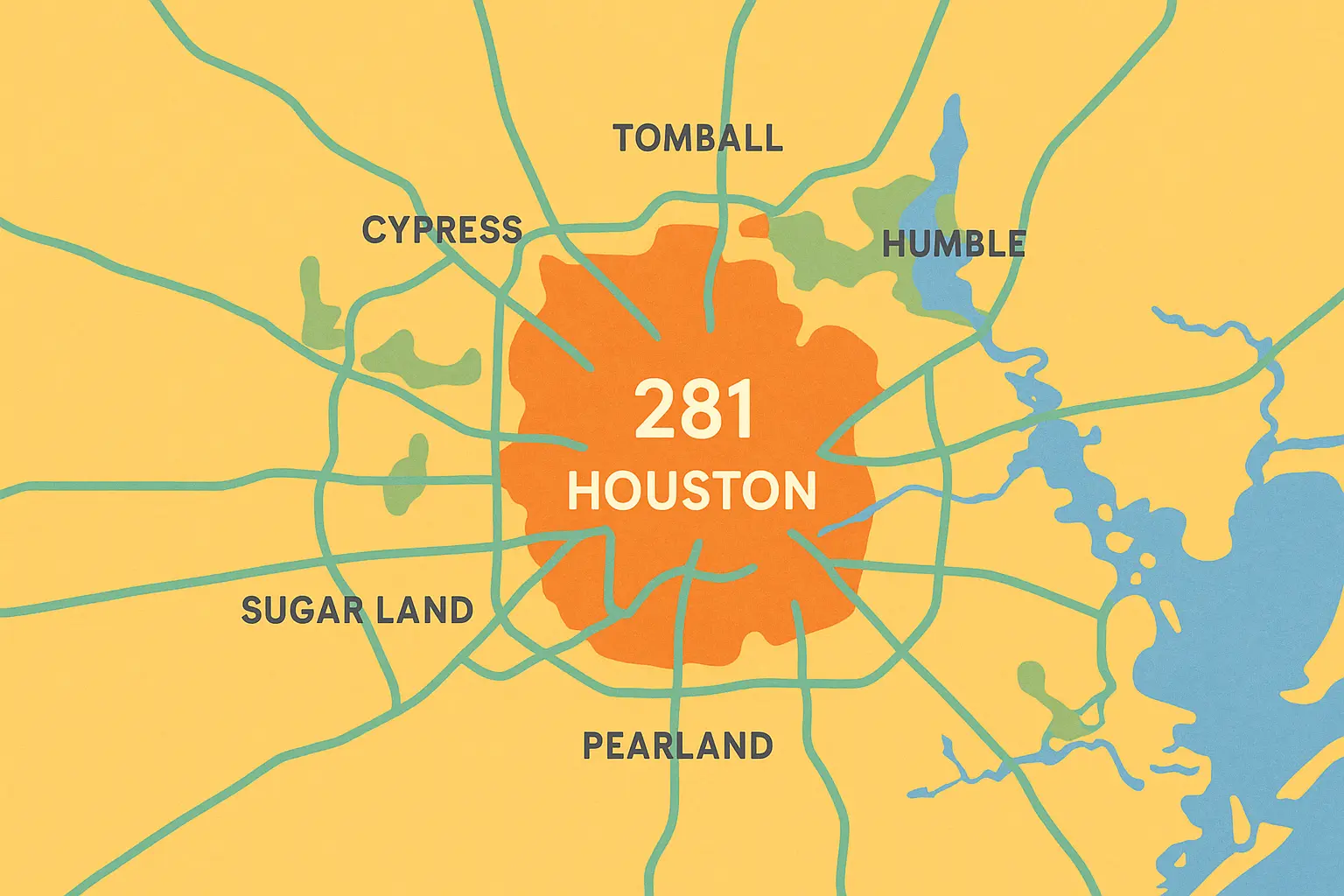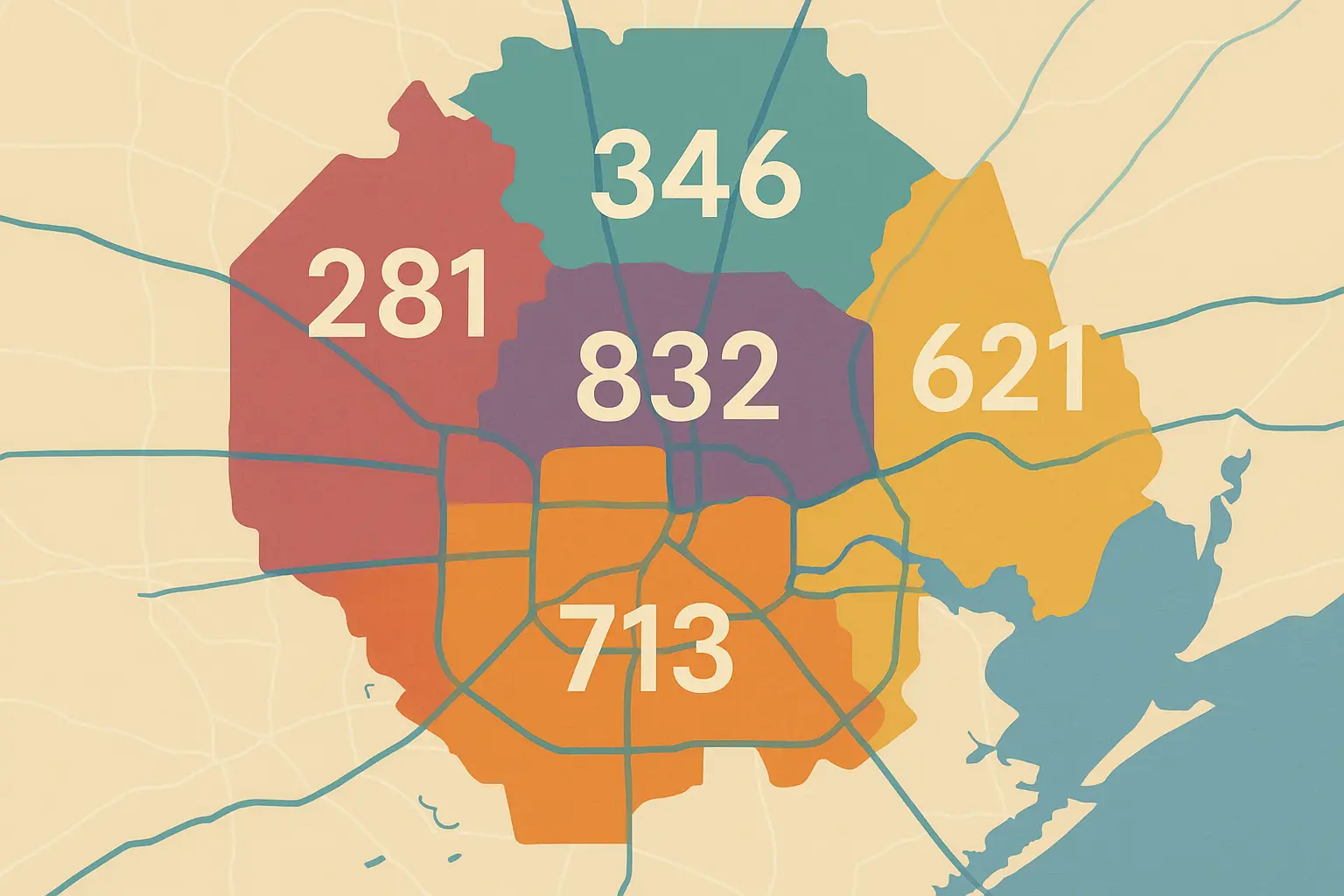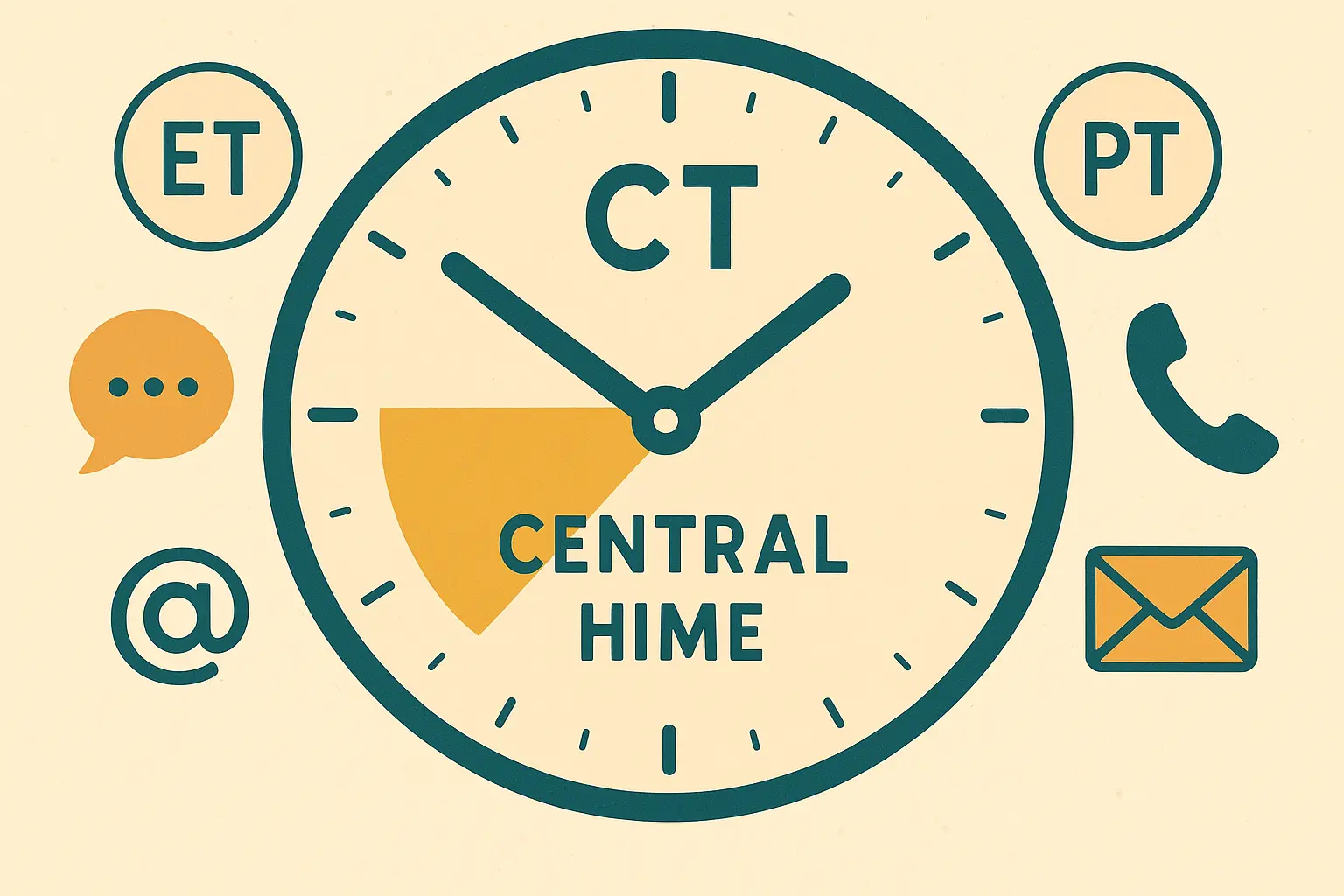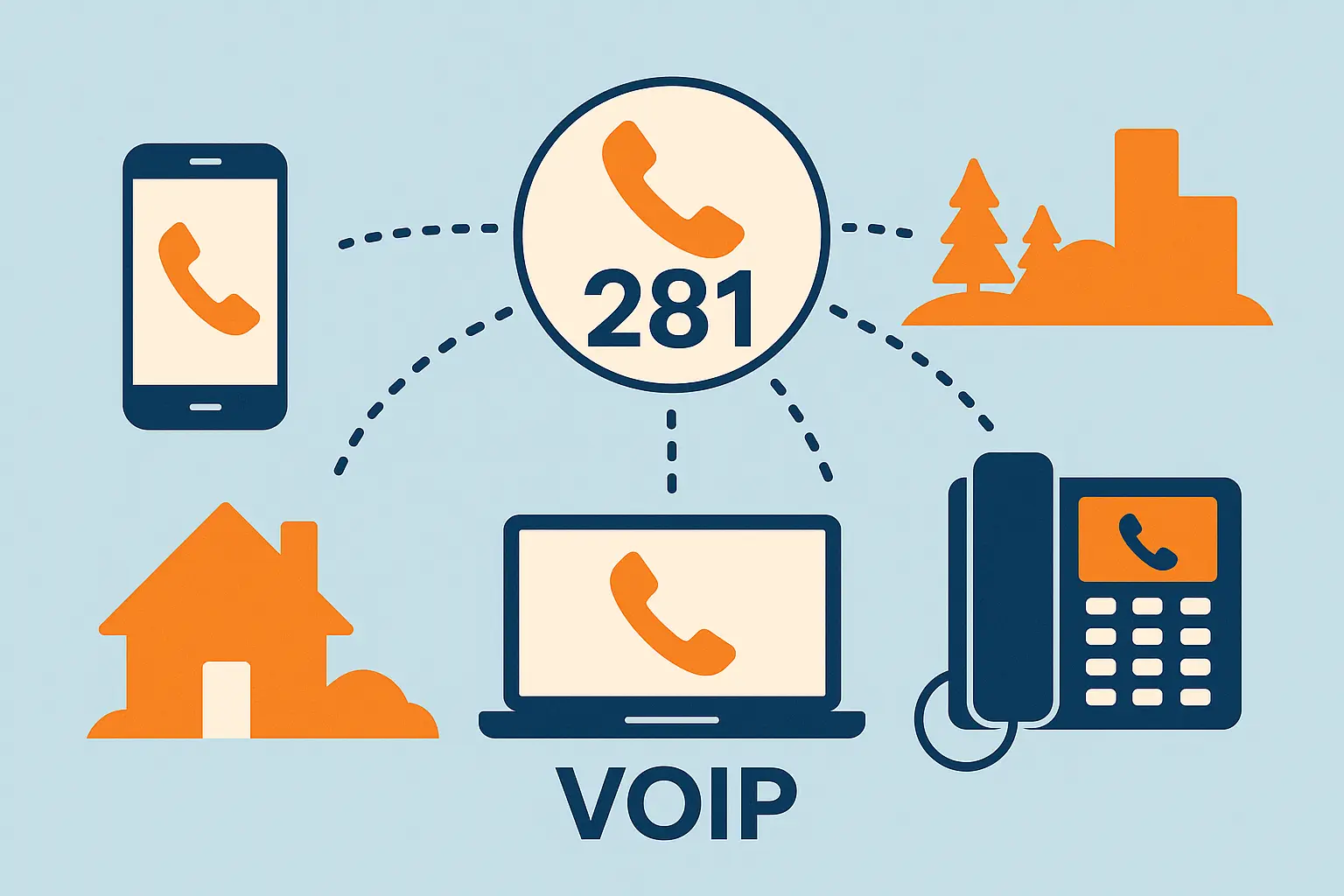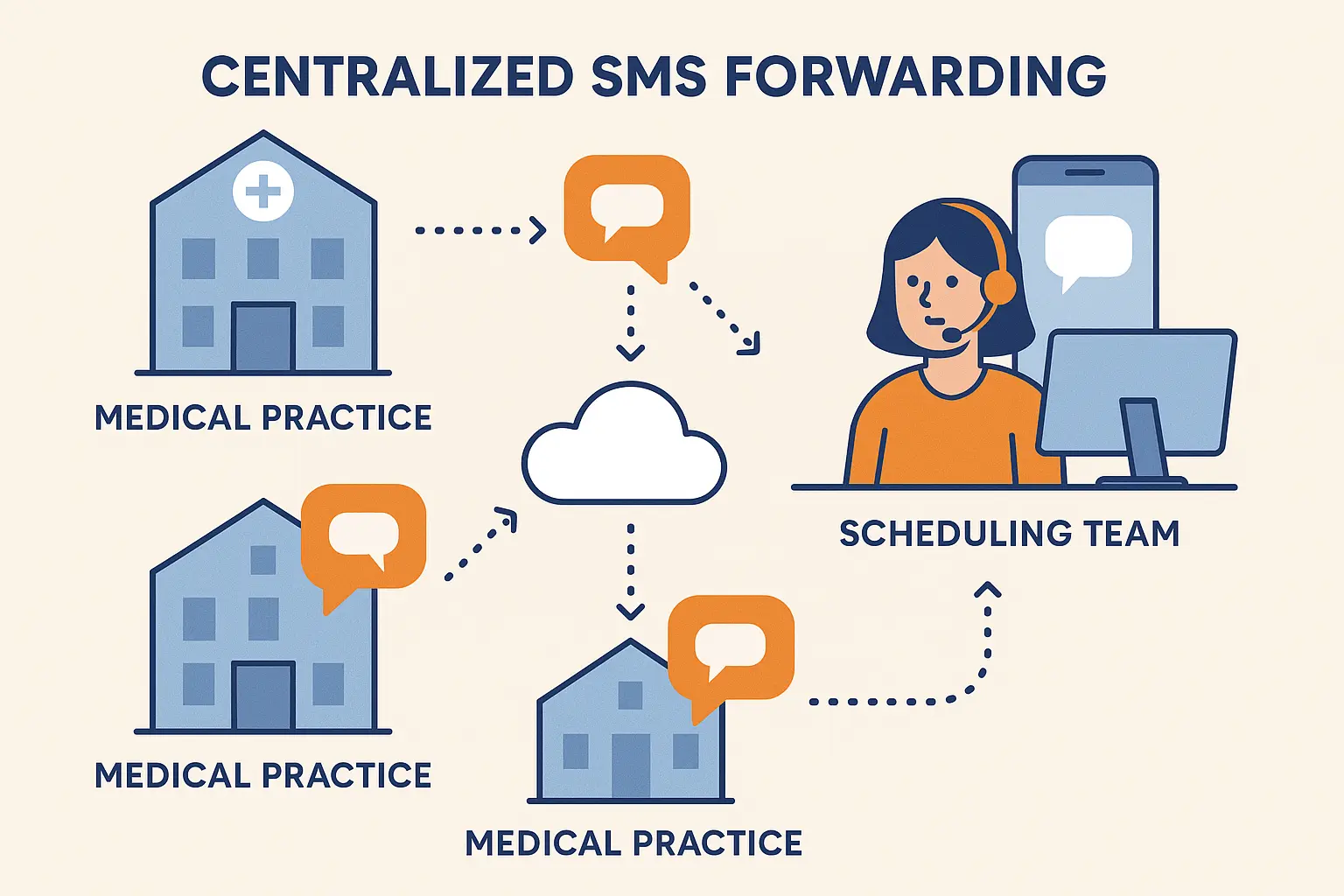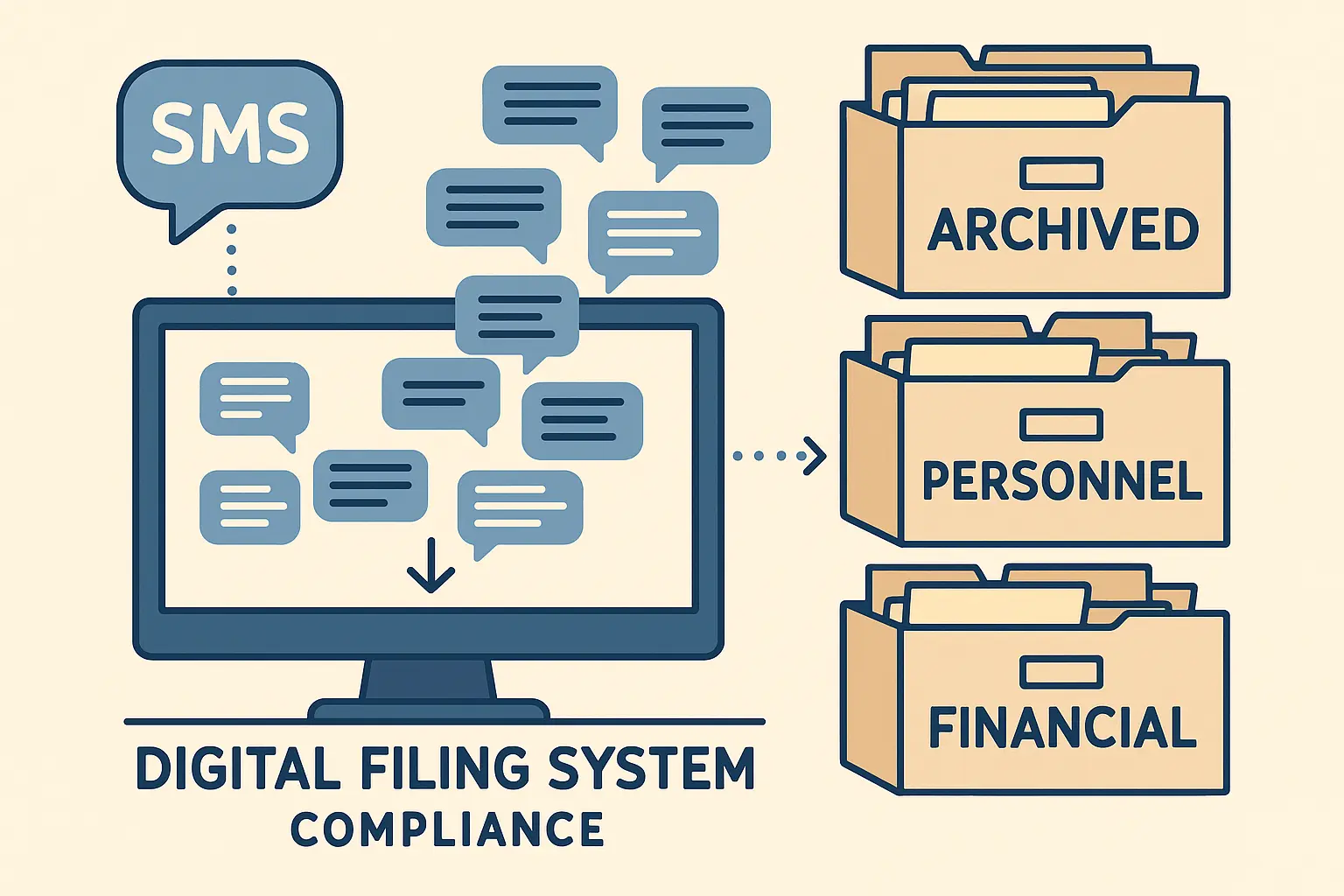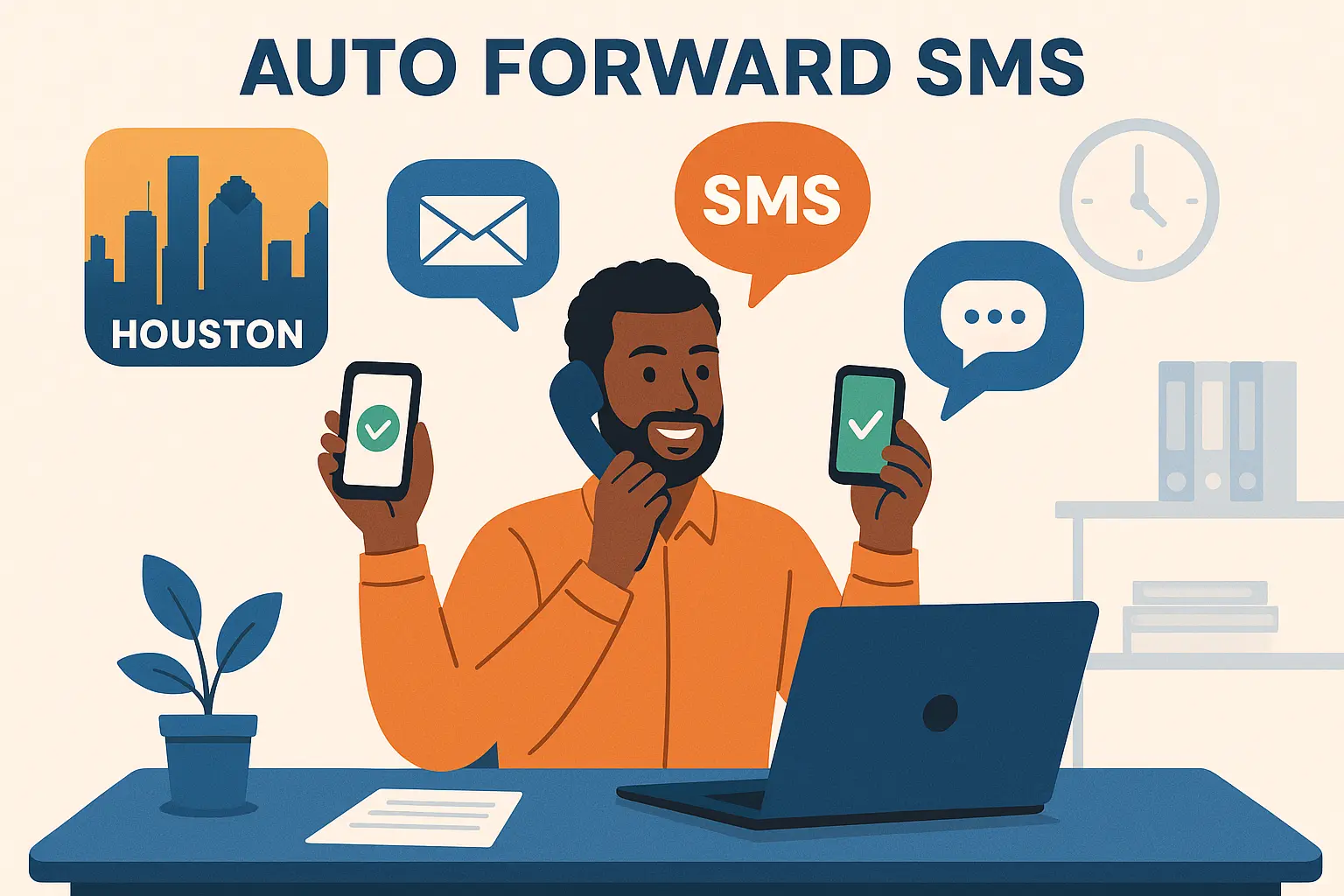Here’s something that surprised me when I moved to Houston: the 281 area code isn’t just Houston. It covers nearly 5 million people spread across a huge chunk of Southeast Texas, making it one of the busiest phone zones in the state.
Most people living here have no idea how this system actually works or why it matters for their daily life. I spent my first year here completely confused about why my neighbor in The Woodlands had a different area code than me, even though we lived three houses apart.
The 281 system isn’t just another set of numbers – it’s the backbone connecting communities, businesses, and families across one of America’s fastest-growing regions. And honestly, there’s a lot more going on behind the scenes than most people realize.
Table of Contents
Table of Contents
-
Understanding Where 281 Actually Covers (It’s Bigger Than You Think)
-
The Confusing World of Houston’s Multiple Area Codes
-
Time Zone Basics Every 281 User Should Know
-
How Modern Tech Changed Everything for 281 Numbers
-
Business Communication Headaches in the 281 Region
-
Why Your SMS Messages Might Be Getting Lost
-
Solutions That Actually Work for 281 Communication Problems
TL;DR
-
The 281 coverage stretches way beyond Houston proper – it includes major suburbs like The Woodlands and Sugar Land across multiple counties
-
Houston uses three area codes (713, 281, and 832) that all serve the same geographic area through a shared numbering system
-
All 281 numbers run on Central Time, which works perfectly for doing business with both coasts
-
Modern businesses struggle with SMS communications across multiple locations and remote teams
-
Auto Forward SMS solves the biggest headache – making sure you never miss important text messages sent to your business numbers
The reality is that 281 operates alongside 713 and 832 in a complex shared system that confuses even longtime Houston residents.
Understanding Where 281 Actually Covers (It’s Bigger Than You Think)
When I first got here, I thought 281 was just another Houston area code for a specific part of town. Turns out it covers a massive chunk of Southeast Texas that would surprise most people who think they understand Houston’s layout.
We’re talking about everything from wealthy suburbs in northwest Harris County to booming communities in the southwest, plus chunks of surrounding counties that many folks don’t even realize are included.
The Suburban Powerhouses You Didn’t Expect
Here’s what blew my mind: some of Houston’s most important communities all share 281 numbers. The Woodlands, Spring, Tomball, parts of Sugar Land, Missouri City, and Pearland – these aren’t just random suburbs. They’re economic engines driving much of Texas’s growth.
The median household income in the 281 area hits $84,892, way higher than most other Texas metro areas. These communities house major corporate headquarters, medical facilities, and business districts that coordinate with offices nationwide.
Northwest Harris County’s Hidden Gems
Take The Woodlands as a perfect example. This master-planned community houses major corporate headquarters like Anadarko Petroleum and ExxonMobil’s campus, all operating under 281 numbers while serving as regional business hubs. The economic impact of this single community ripples throughout the entire Houston region.
The northwest section has become a magnet for families and businesses because of these master-planned communities. They’ve got their own business districts that rival downtown Houston in some ways.
Southwest Growth Explosion Areas
The southwest areas under 281 have exploded due to their strategic position between downtown Houston and major highways. This rapid growth creates unique communication challenges as businesses try to stay connected across these sprawling locations.
I know a contractor who missed three emergency calls last week because texts went to his main office while he was at a job site in Sugar Land. His crew sat idle for two hours waiting for parts approval that never came.
Multi-County Reach That Surprises Everyone
Here’s what really caught me off guard – 281 doesn’t stop at Harris County lines. It extends into Fort Bend, Montgomery, and other adjacent counties, showing just how sprawling the Houston metro area has become.
This creates interesting dynamics for businesses operating across county lines but using the same area code. Understanding the geographic scope affects everything from delivery logistics to customer service territories.
|
County |
Major 281 Communities |
Primary Industries |
|---|---|---|
|
Harris |
The Woodlands, Spring, Tomball |
Energy, Healthcare, Technology |
|
Fort Bend |
Parts of Sugar Land, Missouri City |
Healthcare, Education, Retail |
|
Montgomery |
Conroe, Willis |
Manufacturing, Retail, Services |
|
Brazoria |
Pearland, Friendswood |
Petrochemicals, Healthcare |
The 281 area extends far beyond what most people imagine, creating a complex web of interconnected communities sharing the same phone infrastructure.
The Confusing World of Houston’s Multiple Area Codes
Houston’s area code situation is honestly a mess that trips up newcomers and longtime residents alike. Here’s the weird thing about Houston phones: you and your neighbor could have completely different area codes – 713, 281, or 832 – even though you live on the same street. It’s like the phone company just throws darts at a board when assigning numbers.
The city operates with three different area codes serving the exact same geographic region through what’s called a shared numbering system. Understanding how this works can save you from serious communication headaches.
The situation is about to get even more complex as “Houston to receive new area code as city’s population continues to rise” Dallas News reports that the new 621 area code will be added to the existing four area codes (281, 346, 713, and 832) starting January 23, 2025, because the current codes are expected to run out of numbers by 2025.
How the Shared System Actually Works
This shared system happened because Houston’s explosive growth in the 1990s and 2000s created such demand for phone numbers that one area code couldn’t handle it all. When you request a new phone line today, you might get 281, 713, or 832 depending on what’s available. The system doesn’t assign codes based on where you live – it’s purely about number availability.
I remember when this system first rolled out – the confusion was incredible. People couldn’t understand why their neighbor had a different area code even though they lived on the same street.
The 832 Integration Nobody Talks About
Most people know about 713 and 281, but 832 often gets forgotten even though it serves the same exact area. This three-way system ensures there are enough numbers for continued growth, but it also means you can’t assume someone’s location based on their area code anymore.
Why 713 Still Carries Prestige
Even though all three area codes serve the same area, 713 numbers still carry cachet because they’re Houston’s original designation from the early phone system days. Many established businesses hang onto their 713 numbers for marketing reasons, while newer companies often get assigned 281 or 832 based on availability.
Companies with 713 numbers often highlight them in their marketing materials, and some businesses specifically request 713 numbers when available. The 713 designation carries historical weight that the newer codes haven’t achieved yet.
Time Zone Basics Every 281 User Should Know
All 281 numbers operate on Central Time, which puts Houston in a sweet spot for business communications. I’ve found this timing works incredibly well for coordinating with both East and West Coast operations, giving you optimal communication windows throughout the day.
The Central Time positioning allows for maximum overlap with business hours nationwide. You can start your day catching East Coast clients during their peak business hours, then extend operations to accommodate West Coast meetings.
Business Hour Advantages You’re Probably Missing
Operating on Central Time means your standard 8 AM to 5 PM business day overlaps perfectly with East Coast afternoon hours and West Coast morning hours. This timing advantage is something many Houston businesses don’t fully leverage when planning their communication strategies.
A consulting firm can start their day at 8 AM Central (9 AM Eastern) to catch East Coast clients during their peak hours, then extend operations until 6 PM Central (4 PM Pacific) to accommodate West Coast meetings, maximizing their daily communication window.
Daylight Saving Time Complications
The seasonal time changes can mess with automated systems and create confusion when coordinating with regions that don’t observe daylight saving time. I’ve seen businesses struggle with this twice a year, especially when dealing with SMS scheduling and automated communications.
Twice a year, I watch Houston businesses scramble to adjust their automated systems and communication schedules. The spring and fall time changes create temporary chaos that smart businesses prepare for in advance.
How Modern Tech Changed Everything for 281 Numbers
The phone landscape for 281 numbers has transformed dramatically with internet-based calling, mobile integration, and advanced digital networks. What used to be simple landline assignments now involve complex decisions about maintaining local presence while leveraging modern communication technologies.
As “New area code 621 will join Greater Houston metro starting Jan. 23, 2025” ABC13 reports, customers requesting new service or additional lines may receive the new 621 area code, highlighting how rapidly the region’s phone infrastructure is evolving to meet demand.
The 281 area has become a testing ground for new phone technologies. Companies use this region to pilot new services because of its diverse business landscape and tech-savvy population.
Internet Calling and Digital Service Integration
Voice over Internet Protocol services have revolutionized how businesses use 281 numbers, allowing companies to maintain local Houston presence while employees work remotely or from multiple locations. This flexibility comes with its own set of communication management challenges that many businesses aren’t prepared for.
The 281 area has embraced internet calling faster than many other regions, partly because of the tech industry presence in areas like The Woodlands and Sugar Land.
Mobile and Landline Boundaries Disappearing
The distinction between mobile and landline 281 numbers has basically vanished, with many businesses now using 281 numbers exclusively on mobile devices. This shift creates new opportunities for flexibility but also new challenges for message management and professional communication standards.
5G Network Impact on Services
The rollout of 5G networks throughout the region is enabling new communication capabilities and faster data speeds, but it’s also creating more complex integration requirements for businesses trying to manage multiple communication channels effectively.
Houston’s 5G infrastructure development has been particularly robust in the 281 area, thanks to the concentration of tech companies and high-income households that drive demand for advanced services.
Business Communication Headaches in the 281 Region
Running a business with 281 numbers comes with unique challenges that trip up even experienced operators. The sprawling geographic coverage, multiple locations, remote work integration, and compliance requirements create a perfect storm of communication management complexity.
With 66.4% of the 281 population in the labor force and an unemployment rate of just 6.0%, businesses are dealing with a highly active workforce spread across this massive geographic region. The economic activity creates intense communication demands that traditional systems struggle to handle.
All these geographic and technical complexities create real headaches for businesses. Here’s what I see happening regularly:
Multi-Location Management Nightmares
Businesses operating across the vast 281 service area often struggle with centralizing communications from multiple locations. When you’ve got offices in The Woodlands, Sugar Land, and downtown Houston all using different 281 numbers, keeping track of important messages becomes a logistical nightmare.
Understanding proper phone number formatting becomes crucial when managing multiple business lines across different locations and systems.
I’ve watched companies lose important client communications simply because the right person at the right location never received the message. The geographic spread makes centralized communication management essential but difficult to implement.
Communication Management Checklist for Multi-Location Businesses:
☐ Inventory all numbers across locations
☐ Identify critical communication channels for each office
☐ Establish message routing protocols
☐ Set up centralized monitoring system
☐ Train staff on cross-location communication procedures
☐ Create backup communication methods
☐ Document compliance requirements for each location
Remote Work Communication Gaps
The rise of remote work has created serious blind spots for Houston-area businesses. Employees working from home often miss critical SMS messages sent to office phones, creating delays in customer service and internal communications that can hurt business relationships.
Remote work adoption in the 281 area has been particularly high due to the concentration of professional services and technology companies. This creates unique challenges for maintaining communication continuity.
Compliance and Record-Keeping Challenges
Companies using 281 numbers for business communications frequently need to maintain SMS records for compliance or legal purposes, but traditional SMS systems don’t provide easy archival capabilities. This creates gaps in documentation that can become serious problems during audits or legal proceedings.
The 281 area includes many regulated industries – healthcare, energy, financial services – where communication record-keeping isn’t optional. These businesses need robust systems that can handle compliance requirements while maintaining operational efficiency.
Why Your SMS Messages Might Be Getting Lost
SMS communication problems are more common in the 281 region than most people realize, especially for businesses managing multiple numbers or locations. The complexity of modern communication systems, combined with the geographic spread, creates multiple points where important messages can slip through the cracks.
I’ve seen too many Houston businesses lose customers because critical SMS messages never reached the right person . The region presents unique challenges that require specific solutions.
Multi-Channel Communication Chaos
Modern businesses receive important communications through SMS, email, voice calls, and digital messaging platforms, but managing all these channels becomes exponentially more complex when you’re dealing with multiple 281 numbers across different locations. Important messages get buried or missed entirely.
|
Communication Channel |
Message Volume |
Miss Rate |
Business Impact |
|---|---|---|---|
|
SMS to Office Phone |
High |
35% |
Customer complaints, missed opportunities |
|
|
Very High |
15% |
Delayed responses, workflow disruption |
|
Voice Calls |
Medium |
20% |
Immediate escalation, customer frustration |
|
Digital Messaging |
High |
10% |
Team coordination issues |
Businesses in the 281 area face higher miss rates than the regional average because of the geographic complexity and multi-location operations common in this region.
Team Coordination Breakdowns
When SMS messages arrive at one location but need to be acted upon by team members at different locations, the communication chain often breaks down. This is particularly problematic for service businesses operating across the sprawling coverage area.
The average household size in the 281 area is 2.8 people, but when it comes to business operations, coordination across multiple locations and remote workers requires managing communications for much larger teams spread across this vast geographic area.
Communication breakdowns cost Houston businesses millions of dollars annually in lost opportunities and customer dissatisfaction. The economic importance makes these failures particularly costly.
Solutions That Actually Work for 281 Communication Problems
Look, I get it. You’re juggling texts coming to different locations, remote workers who miss important messages, and clients who expect immediate responses. After seeing countless Houston-area businesses struggle with SMS management, I’ve found that Auto Forward SMS addresses the core pain points that plague 281 number users.
Whether you’re managing multiple locations, coordinating remote teams, or just trying to ensure no important messages get missed, this service provides practical solutions for the unique challenges that Houston’s business environment creates.
Auto Forward SMS allows businesses with multiple 281 numbers to automatically forward all SMS messages to a central email system or team collaboration platform like Slack or Microsoft Teams. This eliminates the communication silos that plague multi-location operations across the Houston metropolitan area.
For businesses ready to implement centralized messaging, forwarding text messages to email provides a straightforward solution that works seamlessly with existing business numbers.
A medical practice with locations in The Woodlands, Sugar Land, an d Pearland can use Auto Forward SMS to route all patient appointment confirmations and cancellations to a central scheduling team, regardless of which 281 number the message was sent to, ensuring no appointments are missed. This approach transforms how area businesses handle patient communications across their entire network.
Geographic boundaries disappear when your communication infrastructure is properly centralized. The system automatically identifies and routes communications from any location within the coverage area.
Remote Work Integration That Actually Works
For Houston-area businesses embracing remote work, Auto Forward SMS ensures employees receive business-critical SMS messages sent to office phones directly in their email, maintaining professional communication standards regardless of where team members are located.
Teams using Slack for collaboration can benefit from forwarding messages to Slack channels to keep 281-based communications integrated with their existing workflow systems.
Remote Work SMS Management Template:
Subject: [URGENT SMS] From: [Phone Number] - [Business Location]
Message: [SMS Content]
Received: [Timestamp]
Location: [281 Office Location]
Action Required: [Yes/No]
Assigned To: [Team Member]
Priority: [High/Medium/Low]
Remote employees no longer miss critical communications from the office locations. The system bridges the gap between traditional office-based SMS systems and modern distributed work arrangements.
Compliance and Archival Solutions
The service automatically creates searchable email archives of all SMS communications, ensuring Houston-based businesses meet record-keeping requirements while providing easy access to historical message data for compliance purposes or customer service reference.
Getting started is straightforward with our first-time setup guide that walks 281 area businesses through the initial configuration process.
Healthcare providers, financial services firms, and energy companies operating in the region can maintain comprehensive communication records without additional administrative burden. The automated archival system handles compliance requirements seamlessly while supporting day-to-day operations.
Final Thoughts
The 281 area code represents far more than just another set of numbers – it’s the phone backbone for one of America’s most dynamic metropolitan regions. Understanding its geographic scope, technical complexities, and modern communication challenges helps both businesses and residents make better decisions about their phone needs.
For businesses operating in this sprawling region, the key is recognizing that traditional SMS management approaches simply don’t work when you’re dealing with multiple locations, remote teams, and compliance requirements. The solution isn’t to accept communication gaps as inevitable, but to implement systems that ensure every important message reaches the right people at the right time.
Ready to eliminate SMS communication gaps in your 281-area business? Auto Forward SMS can help you centralize message management, improve team coordination, and maintain compliance records – all while keeping your existing 281 numbers. Start your free trial today and see how much easier business communication can be.
The 713 area may have the historical prestige, but the 281 region drives much of Houston’s economic growth. Smart businesses in this area invest in communication infrastructure that matches their operational complexity and growth ambitions.
